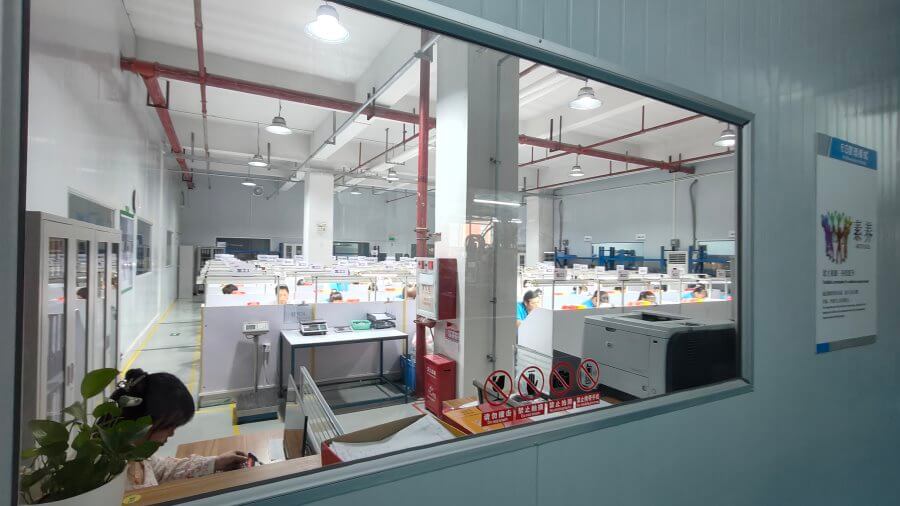Silicone
Silicone, known as “Silicone” in English, is a high-activity adsorption material refined from silica extracted from silicon minerals. It is insoluble in water and any solvent, non-toxic, tasteless, and chemically stable, except for reactions with strong alkalis and hydrofluoric acid. Silicone’s different manufacturing methods result in unique structural characteristics. Its key features include high adsorption capacity, excellent thermal stability, chemical inertness, and high mechanical strength.
Due to its waterproof and insulating properties, silicone meets industrial needs for sealing and pressing, ensuring product stability. Silicone withstands temperatures ranging from -40℃ to 230℃ and is non-toxic, making it particularly suitable for use in the food and biomedical industries.
Dafeng Zhengye specializes in custom silicone development, using raw materials that meet food-grade standards and have passed SGS testing in Taiwan. They provide professional OEM services for silicone products.
Silicon is the second most abundant element on Earth’s surface (about 28%), after oxygen. The primary component is silica (SiO₂), a fundamental material for producing high-purity silicon metal. By refining silicon minerals into silicon sand and using carbothermal methods, silicon sand is reduced in an electric furnace to produce metallic silicon (purity 97%–98%).
Metallic silicon, also known as industrial or crystalline silicon, is a compound made of sodium and silicon, appearing as a white or light gray solid. It is stable, with a high melting point and hardness, serving as a base material for industrial and chemical manufacturing. Silicon used in electronic components and organosilicon products originates from silicon minerals. After refining industrial-grade silicon, chemical-grade silicon is obtained, followed by ultra-pure silicon for semiconductors, presented as polycrystalline or monocrystalline silicon.
Organosilicon, a compound of silicon and carbon, can bond with other organic substances. It is widely used to produce various organosilicon compounds like resins and polymers. Its corrosion resistance, oxidation prevention, and antibacterial properties make it common in cosmetics and medical products.
Silicone belongs to the organosilicon category, primarily composed of amorphous silicon dioxide, hence its name. It was developed in 1943 by DowCorning, a joint venture of Dow Chemical and Corning Glass. Silicone’s excellent insulation, waterproofing, weather resistance, anti-aging, UV resistance, and non-toxic properties make it increasingly used in diverse applications.
Fields of application include aerospace, cutting-edge technology, military, construction, electronics, automotive, textiles, machinery, leather, paper manufacturing, chemicals, medicine, and food processing. Food-grade silicone is safe for direct food contact, meeting environmental and FDA standards, and is commonly used in kitchenware, baby products, and medical devices.
Types of Silicone by Composition: Organic and Inorganic
Organic Silicone: This compound combines silicon from quartz sand with organic macromolecules, creating a hybrid material. It inherits the benefits of both inorganic and organic materials, offering exceptional performance like temperature resistance, aging resistance, electrical insulation, hydrophobicity, flame retardancy, and non-toxicity.
By curing temperature, organic silicone is categorized into:
- High-temperature curing: Solid silicone (HTV) or liquid silicone (LSR).
- HTV is shaped using compression molding or extrusion and is highly resistant to extreme temperatures.
- LSR, being highly fluid, is ideal for medical and baby products due to its transparency and cleanliness.
- Room-temperature curing: Single-component (RTV1) and two-component (RTV2) types, further divided into condensation and addition-cured silicone.
Inorganic Silicone: Known as silica micro-powder, it is made by reacting sodium silicate with sulfuric acid, undergoing aging and acid treatments. Inorganic silicone is amorphous, granular, or beaded, offering excellent adsorption, heat stability, and mechanical strength. It is used as a high-activity adsorption material with applications in industrial processes.
Inorganic silicates include soluble types like sodium or potassium silicate and insoluble forms like calcium or magnesium silicate. Silica gel, a common inorganic silicon product, has a porous structure suitable for water and gas adsorption, further enhancing its versatility. Rubber
Rubber refers to high-elasticity polymer materials capable of reversible deformation. At room temperature, rubber is highly elastic and can undergo significant deformation under minimal external force, returning to its original state once the force is removed. Rubber is a completely amorphous polymer with a low glass transition temperature (Tg) and a high molecular weight, often exceeding hundreds of thousands.
Rubber is generally divided into natural rubber and synthetic rubber. Natural rubber is derived from the latex secreted by Hevea brasiliensis (rubber tree) and undergoes processes such as coagulation and processing, accounting for about 40% of total production. Synthetic rubber, on the other hand, is created using raw materials like natural gas, coal, and petroleum. It is synthesized chemically into monomers, which are then polymerized to create elastic polymers with high elasticity within a certain temperature range, serving as substitutes for natural rubber and accounting for approximately 60% of total production.
Types of Rubber: Natural vs. Synthetic
Natural Rubber Natural rubber is made from the latex harvested from the Brazilian rubber tree, processed into an elastic solid through coagulation, drying, and other steps. At room temperature, natural rubber exhibits high elasticity, slight plasticity, excellent mechanical strength, and low hysteresis loss, meaning it generates less heat during repeated deformation. This makes it highly flexible and durable. Additionally, being a non-polar rubber, it offers good electrical insulation. With greater structural regularity, higher raw strength, and faster vulcanization rates, natural rubber is a critical material in industries like tire manufacturing, gloves, and rubber mats.
Synthetic Rubber Synthetic rubber is an artificial, high-elasticity polymer, also known as synthetic elastomer. It is one of the three primary synthetic materials, with production second only to synthetic resins and synthetic fibers. Types of synthetic rubber include Natural Rubber (NR), Polybutadiene Rubber (BR), Nitrile Butadiene Rubber (NBR), Styrene-Butadiene Rubber (SBR), Chloroprene Rubber (CR), Isoprene Rubber (IR), Butyl Rubber (IIR), Hydrogenated Nitrile Butadiene Rubber (HNBR), Ethylene-Propylene Rubber (EPM/EPDM), and Fluorine Rubber (FPM).
Plastics
Plastics are materials primarily made of synthetic resins with high molecular weight. Additives such as plasticizers, stabilizers, flame retardants, lubricants, and colorants may be incorporated during processing to shape the material into solid forms. Plastics can flow during manufacturing and shaping, enabling molding into soft, flexible materials or rigid, cross-linked forms.
Synthetic resin is the primary component of plastics, usually constituting 40%-100% of their composition. Resin properties often determine plastic characteristics, leading to the common misconception that “resin” and “plastic” are interchangeable terms. For example, PVC resin and PVC plastic, or phenolic resin and phenolic plastic, are often confused. However, resin refers to raw polymers used not only in plastics but also in paints, adhesives, and synthetic fibers. Plastics typically include additives, making resin just one component of the material.
Types of Plastics: Thermosetting vs. Thermoplastic
- Thermosetting Plastics These plastics harden permanently during processing due to chemical changes. Once heated and molded into a network structure, they do not soften upon reheating. Examples include phenolic, urea-formaldehyde, melamine-formaldehyde, epoxy, and unsaturated polyester plastics.
- Thermoplastics These plastics melt upon heating, allowing for reshaping and re-cooling into a solid state. Reheating re-melts the material, enabling reversible changes between liquid and solid states. Examples include Nylon, Polyethylene (PE), Polypropylene (PP), Polyvinyl Chloride (PVC), Acrylonitrile-Butadiene-Styrene (ABS), Polystyrene (PS), Polyoxymethylene (POM), Polycarbonate (PC), Polyurethane (PU), and Polytetrafluoroethylene (PTFE).
Differences Between Silicone, Plastic, and Rubber
Over the past decade, silicone products have become increasingly popular but are often mistaken for plastic or rubber. Silicone aims to replace polluting plastics and rubbers. Unlike plastic and rubber, which release toxic substances when heated, silicone has all toxic components removed during manufacturing and can withstand temperatures up to 230°C. While plastic and rubber have limited lifespans and become brittle over time, silicone is safe, durable, and reduces resource consumption significantly.
Silicone vs. Plastic
Key differences include:
- Touch and Texture: Silicone and rubber feel softer, more comfortable, and elastic, whereas plastic lacks elasticity, feels harder, and is more rigid.
- Stress-Strain Curves: Plastic exhibits a steep rise in stress during initial stretching, yielding, elongation, and breaking phases. In contrast, silicone and rubber show gradual stress increases until they near breaking, with significantly higher elongation at break.
- Thermal Properties: Plastics operate below their glass transition temperature, while silicone and rubber function above theirs, exhibiting high elasticity.
- Deformation Recovery: Plastics undergo plastic deformation and struggle to return to their original state, while silicone and rubber experience elastic deformation, making recovery easier.
Silicone vs. Rubber
Both silicone and rubber are elastic polymers, but silicone offers superior performance:
- Temperature Resistance: Silicone remains stable at extreme temperatures (-60°C to 230°C), while rubber degrades at 80°C and melts at 120°C.
- Flame Retardancy: Silicone is more flame-resistant than rubber.
- Durability: Silicone resists UV radiation, ozone, and fungal attacks, making it more suitable for high-temperature and outdoor applications.
Stability: Silicone’s silicon-oxygen bonds are more stable than the carbon-carbon double bonds in rubber, ensuring better resistance to environmental stressors.





